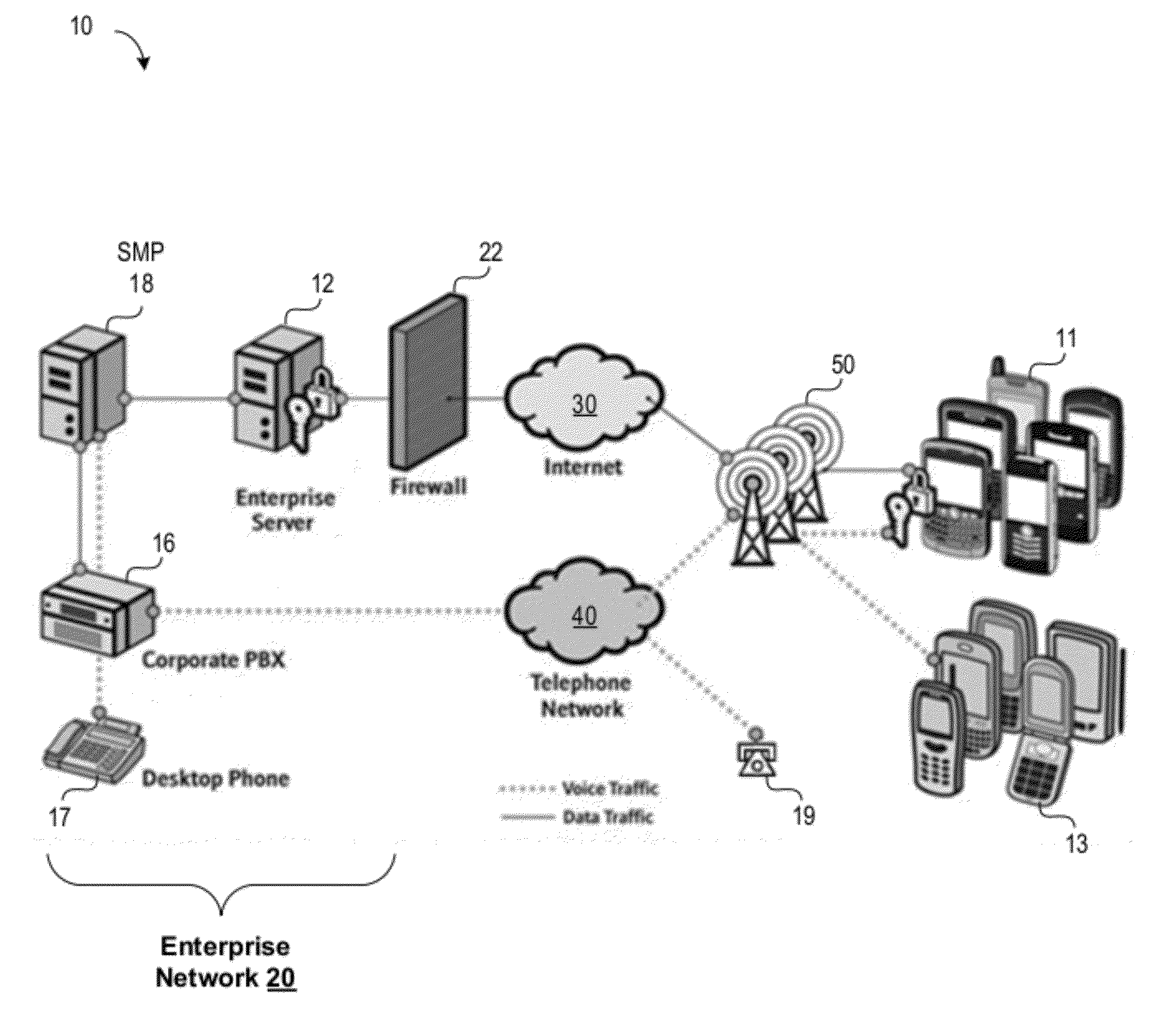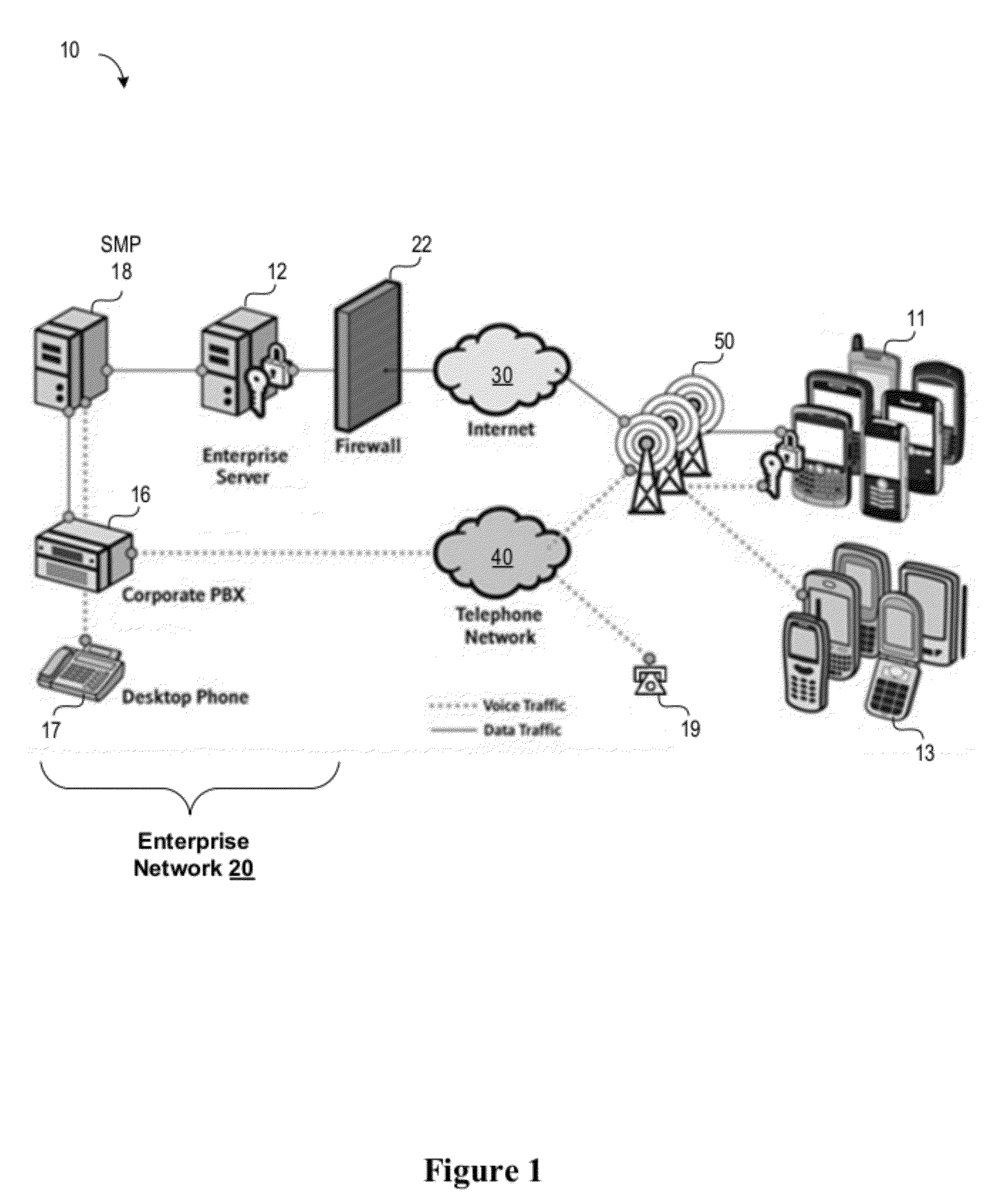Using the IMSI Value From the SIM Card Data to Make an External Call
- Summary
- Abstract
- Description
- Claims
- Application Information
AI Technical Summary
Problems solved by technology
Method used
Image
Examples
first embodiment
[0031]Referring now to FIG. 2, there is shown a schematic block diagram representation of the enterprise communications platform intended for use in a circuit-switched TDM context where the SMP 18 operates as a voice mobility server. As described below, it will be appreciated that the references to “calls” or call-centric features are applicable to session-based communications in general and, in some instances, to messaging-based communications. As depicted, the PBX 16 is coupled to the SMP 18 via PRI connection 60 or other suitable digital trunk. In some embodiments, the PRI connection 60 may include a first PRI connection, a second PRI connection, and a channel service unit (CSU), wherein the CSU is a mechanism for connecting computing devices to digital mediums in a manner that allows for the retiming and regeneration of incoming signals. It will be appreciated that there may be additional or alternative connections between the PBX 16 and the SMP 18.
[0032]In this embodiment, the ...
second embodiment
[0033]Referring now to FIG. 3, there is shown a schematic block diagram representation of the enterprise communications platform in which the PBX 16 performs the functions of terminating and / or bridging media streams, but call control functions are largely handled by the SMP 18. In this embodiment, the SMP 18 may be referred to as a call control server 18. This architecture may be referred to as “Third-Party Call Control.” As depicted, the call control server 18 is coupled to the PBX 16, for example through the LAN, enabling packet-based communications and, more specifically, IP-based communications. In selected embodiments, communications between the PBX 16 and the call control server 18 are carried out in accordance with SIP so that the call control server 18 uses SIP-based communications to manage the set up, tear down, and control of media handled by the PBX 16. In other embodiments, the call control server 18 employs a communications protocol conforming to the ECMA-269 or ECMA-...
third embodiment
[0034]Referring now to FIG. 4, there is shown a schematic block diagram representation of the enterprise communications platform which reflects the adaptation of an existing set of call processing scripts to an architecture that relies on third-party call control, with separate call control and media handling. The SMP 18 includes a call processing server 74. The call processing server 74 includes the scripts or other programming constructs for performing call handling functions. The SMP 18 also includes a SIP server 72 and a media server 76. The separate SIP server 72 and media server 76 logically separate the call control from media handling. The SIP server 72 interacts with the call processing server 74 using a computer-implemented communications handling protocol, such as one of the ECMA-269 or ECMA-323 standards. These standards prescribe XML based messaging for implementing Computer Supported Telecommunications Applications (CSTA). The SIP server 72 may interact with the media ...
PUM
 Login to View More
Login to View More Abstract
Description
Claims
Application Information
 Login to View More
Login to View More - R&D
- Intellectual Property
- Life Sciences
- Materials
- Tech Scout
- Unparalleled Data Quality
- Higher Quality Content
- 60% Fewer Hallucinations
Browse by: Latest US Patents, China's latest patents, Technical Efficacy Thesaurus, Application Domain, Technology Topic, Popular Technical Reports.
© 2025 PatSnap. All rights reserved.Legal|Privacy policy|Modern Slavery Act Transparency Statement|Sitemap|About US| Contact US: help@patsnap.com



